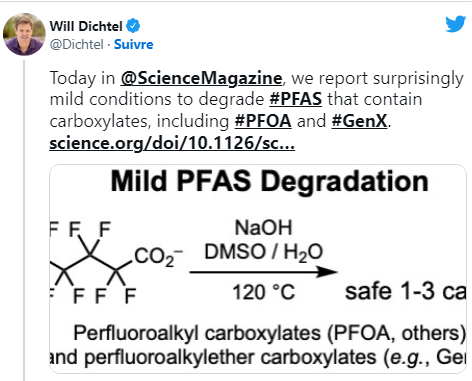A significant advance in the ongoing battle to reduce pollution On Thursday, researchers claimed that they had discovered a way to eradicate some pollutants that are known as “forever” because of their extraordinary resilience and toxicity. These pollutants are present in many products that are used on a daily basis and can cause major health issues.
The method was created by chemists in the United States and China, and their work was published in the journal Science. It can only be carried out at temperatures that are only moderately high, and it calls for the use of reactants that are considered to be relatively common.
Packaging, shampoos, non-stick cookware, and even make-up can all include PFAS, which stands for per and polyfluoroalkyl and was developed in the. PFAS degrade very slowly and are present in a variety of products. Over the course of time, they have dispersed across our ecosystem, including the water, soil, air, surface water, and groundwater as well as lakes and rivers. A study conducted in Sweden revealed the previous week that rainwater on the entire planet has unsafe levels of PFAS, making it unfit for human consumption.

Fertility, obesity, malignancies, and cholesterol levels are all affected.
According to the findings of several studies, being exposed to PFAS can have an impact on both fertility and the development of the fetus. In addition to this, it can lead to a rise in the risk of obesity as well as some malignancies (affecting the testicles, prostate, and kidneys), as well as an increase in cholesterol levels.
In order to degrade these contaminants with today’s methods, forceful treatments are required, such as irradiation with ultrasonic waves or cremation at extremely high temperatures. Their nearly indestructible nature can be traced back to the lengthy carbon-fluorine bonds that make up their structure. These bonds are among the most robust found in organic chemistry.
However, the researchers were able to find a flaw in some kinds of PFAS: at one end of their molecule, a group of oxygen atoms can be targeted by a solvent and a common reagent at temperatures ranging from 80 to 120 degrees Celsius on average. When something like this occurs, “it causes the entire molecule to collapse in a cascade of complex processes,” according to William Dichtel of Northwestern University, who is one of the study’s authors and a participant in the research.
The quantum mechanics that lie behind these chemical processes have also been mapped by scientists, with the use of advanced computational methods. Work that has the potential to be utilized in the process of making improvements.

The current investigation focused on ten different PFASs, one of which was a particularly harmful pollutant known as GenX. This pollutant was responsible for the contamination of the Cape Fear River in North Carolina. According to the United States Environmental Protection Agency, however, there are additional factors besides “eternal chemicals.
According to William Dichtel, “There are other forms (of PFAS) that do not have the same Achilles’ heel, but each has its own weak point,” and this is an important issue. “If we are able to identify it, then we will be able to figure out how to activate it so that we can destroy it.






